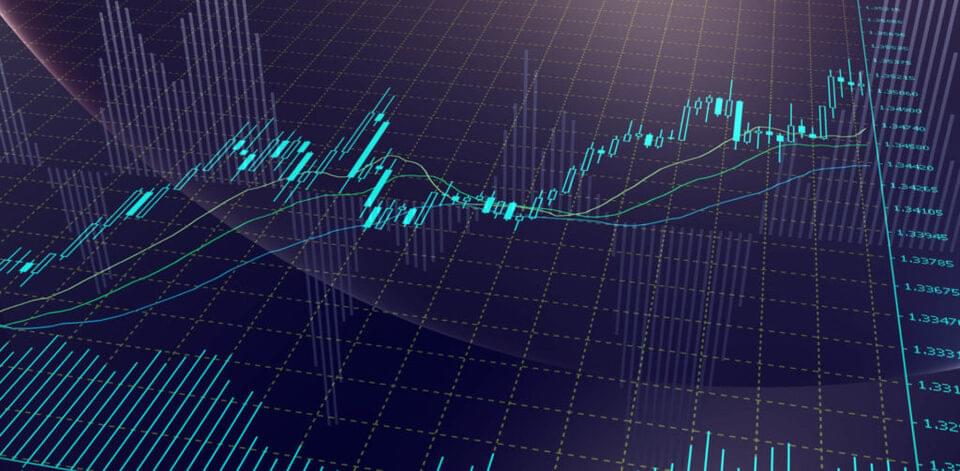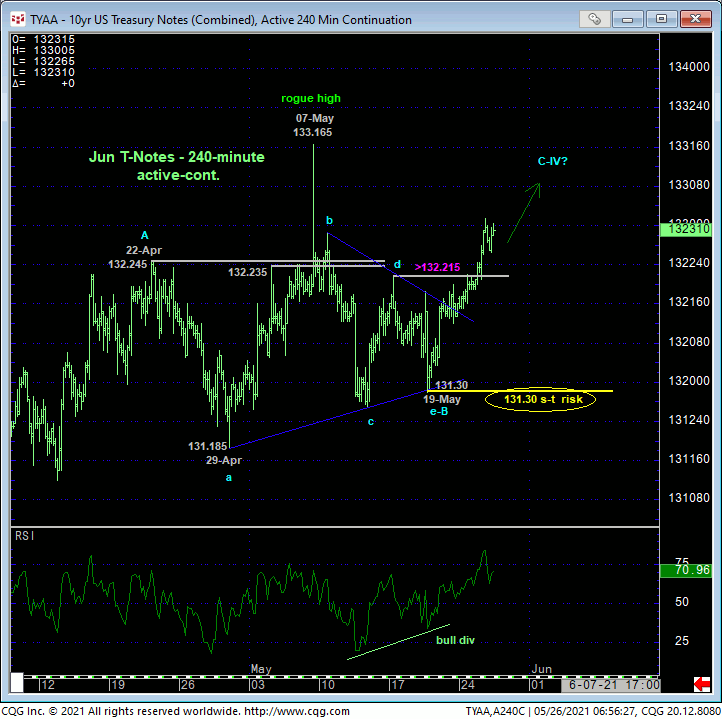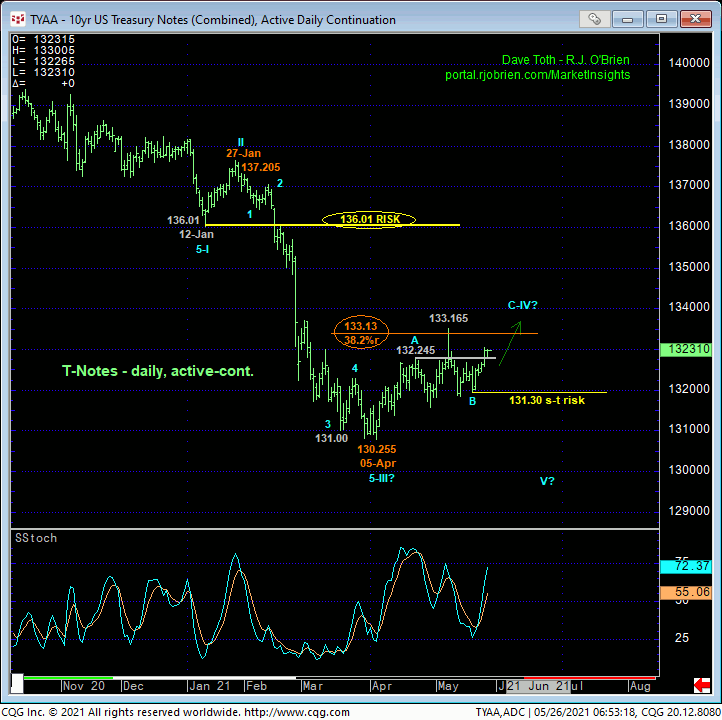
Yesterday’s clear break above 17-May’s 132.215 high confirms a bullish divergence in short-term momentum that we believe defines 19-May’s 131.30 low as the end of a B-Wave diagonal triangle from 22-Apr’s 132.245 high and start of the C-Wave up that resumes our base/correction count introduced in 07-Apr’s Technical Blog. Per such, last week’s 131.30 low serves as our new short-term risk parameter from which non-bearish decisions like short-covers and cautious bullish punts can be objectively rebased and managed.
Former 132-3/4-area resistance would be expected to hold as new near-term support heading forward.


From a longer-term perspective, the recovery from 05-Apr’s 130.255 low is still advised to first be approached as a correction within the new secular bear trend with commensurately larger-degree strength above 12-Jan’s (suspected 1st-Wave) low at 136.01 still required to jeopardize the impulsive integrity of an arguably still-developing major trend down. We’ve noted the (133.13-area) 38.2% retrace of the suspected 3rd-Wave decline from 137.205 to 130.255 as an “area of interest” to beware a recovery-stemming bearish divergence in momentum, but it will be from such a confirmed bearish divergence in mo, regardless of its level, where we’ll be able to conclude the (suspected 4th-Wave) correction’s end and objectively resurrect and rebase a resumed bearish count for shorter-term traders. In lieu of such a mo failure, further lateral-to-higher prices are expected in the period immediately ahead.
These issues considered, a bullish policy is advised for shorter-term traders with tighter risk profiles with, at this juncture, a failure below 131.30 required to negate this call, warrant its immediate cover and reversal into a resumed bearish policy. Longer-term institutional players remain advised to maintain a cautious bearish policy with a recovery above 136.01 required to negate this call and warrant its cover. A relapse below 131.30 would be cause to increase bearish exposure back to a more aggressive stance.


